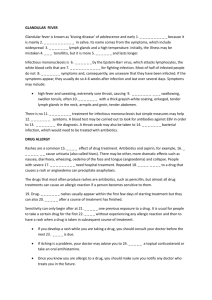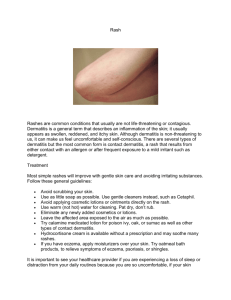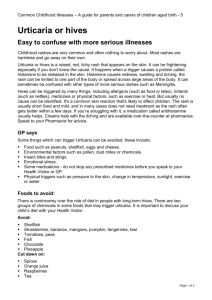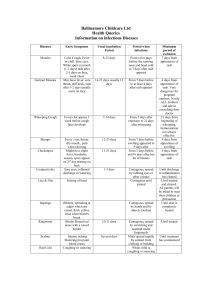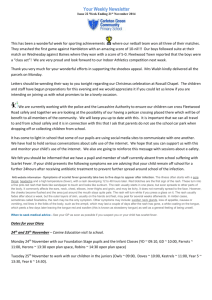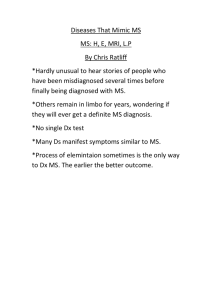skin rashes protocol
advertisement
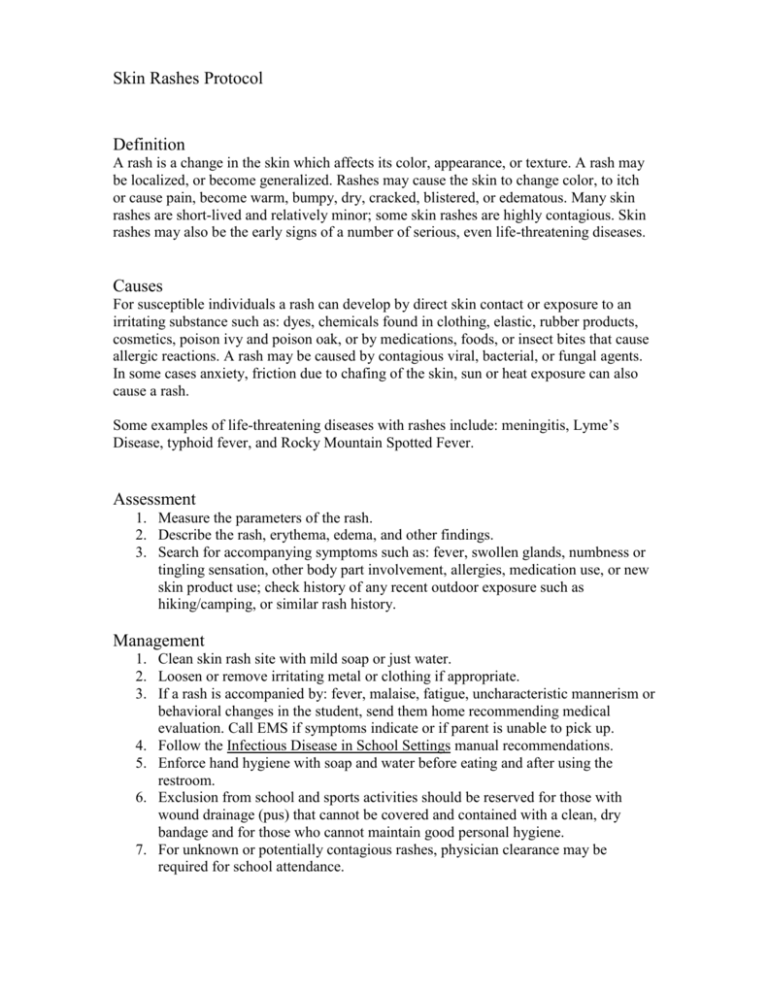
Skin Rashes Protocol Definition A rash is a change in the skin which affects its color, appearance, or texture. A rash may be localized, or become generalized. Rashes may cause the skin to change color, to itch or cause pain, become warm, bumpy, dry, cracked, blistered, or edematous. Many skin rashes are short-lived and relatively minor; some skin rashes are highly contagious. Skin rashes may also be the early signs of a number of serious, even life-threatening diseases. Causes For susceptible individuals a rash can develop by direct skin contact or exposure to an irritating substance such as: dyes, chemicals found in clothing, elastic, rubber products, cosmetics, poison ivy and poison oak, or by medications, foods, or insect bites that cause allergic reactions. A rash may be caused by contagious viral, bacterial, or fungal agents. In some cases anxiety, friction due to chafing of the skin, sun or heat exposure can also cause a rash. Some examples of life-threatening diseases with rashes include: meningitis, Lyme’s Disease, typhoid fever, and Rocky Mountain Spotted Fever. Assessment 1. Measure the parameters of the rash. 2. Describe the rash, erythema, edema, and other findings. 3. Search for accompanying symptoms such as: fever, swollen glands, numbness or tingling sensation, other body part involvement, allergies, medication use, or new skin product use; check history of any recent outdoor exposure such as hiking/camping, or similar rash history. Management 1. Clean skin rash site with mild soap or just water. 2. Loosen or remove irritating metal or clothing if appropriate. 3. If a rash is accompanied by: fever, malaise, fatigue, uncharacteristic mannerism or behavioral changes in the student, send them home recommending medical evaluation. Call EMS if symptoms indicate or if parent is unable to pick up. 4. Follow the Infectious Disease in School Settings manual recommendations. 5. Enforce hand hygiene with soap and water before eating and after using the restroom. 6. Exclusion from school and sports activities should be reserved for those with wound drainage (pus) that cannot be covered and contained with a clean, dry bandage and for those who cannot maintain good personal hygiene. 7. For unknown or potentially contagious rashes, physician clearance may be required for school attendance. 8. Communicate your findings with a parent/guardian; explain your concern to student. 9. Document your findings. Follow-Up 1. Follow the Infectious Disease in School Settings manual for exclusion criteria 2. 3. 4. 5. 6. once the rash is diagnosed by a medical professional. Monitor rash to ensure proper healing following the initial identification. If parent has not taken student in for medical treatment/identification and the rash continues or worsens, complete a medical referral accordingly. Exclude student for drainage/discharge (especially if unable to cover), worsening rash and/or symptom appearance until improvement noted or cleared medically. Notify janitorial staff to clean wrestling mat, classroom desk(s), and other equipment where contamination is suspected. Report to local public health agency if applicable and according to the Infectious Disease in School Settings manual. Bibliography Guide to rashes on Medline Plus Medical Encyclopedia (http://www.nlm.nih.gov/medlineplus/ency/article/003220.htm) – includes photographs Guide to rashes on RevolutionHealth.com (http://www.revolutionhealth.com/conditions/skin/rash/) Llardi, D., Anderson, B.J. (2009). Skin Infections in Athletes: Things You May Not Know. School Nurse News, 26 (1), 25-29. Infectious Disease in School Settings: Guidelines for School Nurses and Personnel Revised December, 2004. Colorado Department of Public Health; Denver, Colorado (http://www.cdphe.state.co.us/dc/Epidemiology/manual/School_Guidelines.pdf) Slide show: rashes http://www.medicinenet.com/skin_problems_pictures_slideshow/article.htm
